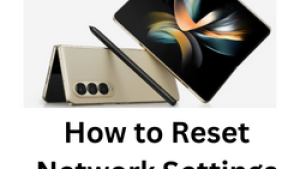High-end smartphones like the Samsung Galaxy S8 may still suffer problems entry-level devices often encounter–slowing down. While it may seem like a minor problem, there are times when it is actually a sign of a serious problem in the hardware or firmware. We have received complaints from our readers who have encountered this kind of problem after an update so we feel the need to address it.
I will walk you through in troubleshooting your phone so that we would know if this problem can be fixed on your end without any help from a technician because if not, then you really have to bring it back to the store and have it replaced as soon as possible. Let’s try to rule out the possibilities why your S8 has started running slow. Hopefully, we can make it run faster again after troubleshooting. So, if you own this phone and are currently experiencing the same issue, continue reading below as it may help you.
But before anything else, if you’re currently experiencing different issues with your phone, then I suggest you visit our Samsung Galaxy S8 troubleshooting page for we’ve already started providing support to our readers who own this device. We understand your phone is still brand new and it should work perfectly without a hitch but not even Samsung can guarantee there won’t be any problems. What we do here is provide help to our readers the best we can so if we haven’t published posts about your concern, feel free to contact us by filling up our Android issues questionnaire.
How to troubleshooting Galaxy S8 that’s running slow
Problem: My Galaxy S8 is now running slow and I remember now that there was an update before this issue. I’m not sure what that update was for but after that, I noticed my phone started to lag that it takes forever to open apps I usually use like texting app and even facebook. I’m not quite sure what I have to do about it so if you guys know, please help me.
Troubleshooting: The good thing about this issue is that we know for sure the phone is capable of powering itself on so we can focus on our troubleshooting. Now, here’s what you need to do:
Step 1: Try to see if the phone is still slow while in safe mode
This is an important procedure because it will tell you if the third-party apps have something to do with the problem or not. Booting in safe mode alone doesn’t fix the problem but at least you can isolate it. So, here’s how you boot your S8 in safe mode:
- Turn the device off.
- Press and hold the Power key past the model name screen.
- When “SAMSUNG” appears on the screen, release the Power key.
- Immediately after releasing the Power key, press and hold the Volume down key.
- Continue to hold the Volume down key until the device finishes restarting.
- Safe mode will display in the bottom left corner of the screen.
- Release the Volume down key when you see Safe Mode.
- Uninstall apps that are causing a problem.
If your phone runs normally in this mode, then one or some of the apps you installed is causing the problem. In this case, you have to move on to the next step, otherwise, skip to step 3.
Step 2: Find the app that’s causing the problem, reset and / or uninstall it
Assuming the phone works well in safe mode, then this step may be a challenge since finding the app that’s causing the problem isn’t easy especially if you already have hundreds of them in your phone. But try to remember the apps you installed prior to the problem and once you already have a suspect, clear its cache and data to reset it and then boot your phone up in normal mode. If the problem still occurs, uninstall the suspected app.
How to clear app cache and data on Galaxy S8
- From the Home screen, swipe up on an empty spot to open the Apps tray.
- Tap Settings > Apps.
- Tap the desired application in the default list or tap 3 dots icon > Show system apps to display preinstalled apps.
- Tap Storage.
- Tap Clear cache.
- Tap Clear data and then tap OK.
How to uninstall apps from your Galaxy S8
- From the Home screen, swipe up on an empty spot to open the Apps tray.
- Tap Settings > Apps.
- Tap the desired application in the default list or tap 3 dots icon > Show system apps to display preinstalled apps.
- Tap the desired application.
- Tap Uninstall.
- Tap Uninstall again to confirm.
Step 3: Restart your phone up in Recovery mode and wipe cache partition
If an issue like this started after a firmware update, then there’s a chance it’s caused by some corrupt or obsolete system caches. To rule this possibility out, you just have to delete all of them at once in Recovery Mode so that the new firmware can create new files.
- Turn off the device.
- Press and hold the Volume Up key and the Bixby key, then press and hold the Power key.
- When the Android logo displays, release all keys (‘Installing system update’ will show for about 30 – 60 seconds before showing the Android system recovery menu options).
- Press the Volume down key several times to highlight “wipe cache partition.”
- Press the Power key to select.
- Press the Volume down key to highlight “yes” and press the Power key to select.
- When the wipe cache partition is complete, “Reboot system now” is highlighted.
- Press the Power key to restart the device.
It will take a little longer for the phone to boot up after wiping the cache partition as it will rebuild those files. But if the problem still persists after this, then you have no other option but to reset your phone.
Step 4: Backup your files and data and reset your phone
This procedure is your last resort, at least, before you send your phone to a tech. This will bring the phone back to its factory default settings but also delete all your files and data so make sure you make a backup of important files you have. After that, disable Factory Reset Protection so you won’t be locked out, then feel free to reset your phone.
How to disable Factory Reset Protection
- From the Home screen, swipe up on an empty spot to open the Apps tray.
- Tap Settings > Cloud and accounts.
- Tap Accounts.
- Tap Google.
- Tap on your Google ID email address if multiple accounts are setup. If you have multiple accounts setup, you will need to repeat these steps for each account.
- Tap 3 dot icon.
- Tap Remove account.
- Tap REMOVE ACCOUNT.
How to reset your Galaxy S8
- Turn off the device.
- Press and hold the Volume Up key and the Bixby key, then press and hold the Power key.
- When the green Android logo displays, release all keys (‘Installing system update’ will show for about 30 – 60 seconds before showing the Android system recovery menu options).
- Press the Volume down key several times to highlight “wipe data / factory reset.
- Press Power button to select.
- Press the Volume down key until ‘Yes — delete all user data’ is highlighted.
- Press Power button to select and start the master reset.
- When the master reset is complete, “Reboot system now” is highlighted.
- Press the Power key to restart the device.
You can also reset your phone from the settings menu…
- From the Home screen, swipe up on an empty spot to open the Apps tray.
- Tap Settings > Cloud and accounts.
- Tap Backup and restore.
- If desired, tap Back up my data to move the slider to ON or OFF.
- If desired, tap Restore to move the slider to ON or OFF.
- Tap the back button to the Settings menu and tap General Management > Reset > Factory data reset.
- Tap Reset.
- If you have screen lock turned on, enter your credentials.
- Tap Continue.
- Tap Delete all.
Step 5: Bring your phone back to the store
After doing all those steps and your phone is still running slow, don’t do anything to it anymore. A brand new phone should work without a hitch and it’s not really your job to deal with this kind of problem. So, bring the phone back to the store and have it replaced.
Connect with us
We are always open to your problems, questions and suggestions, so feel free to contact us by filling up this form. This is a free service we offer and we won’t charge you a penny for it. But please note that we receive hundreds of emails every day and it’s impossible for us to respond to every single one of them. But rest assured we read every message we receive. For those whom we’ve helped, please spread the word by sharing our posts to your friends or by simply liking our Facebook and Google+ page or follow us on Twitter.





![How to fix a Huawei P10 smartphone that won’t turn on? [Troubleshooting Guide]](https://thedroidguy.com/wp-content/uploads/2018/02/huawei-p10-facebook-has-stopped-300x169.jpg)



![How to fix a Samsung Galaxy S9 that cannot read SD card [Troubleshooting Guide]](https://thedroidguy.com/wp-content/uploads/2018/08/S96-300x169.jpg)
![How to fix Samsung Galaxy Note 8 Black Screen of Death [Troubleshooting Guide]](https://thedroidguy.com/wp-content/uploads/2017/11/galaxy-note-8-stuck-logo-300x169.jpg)







